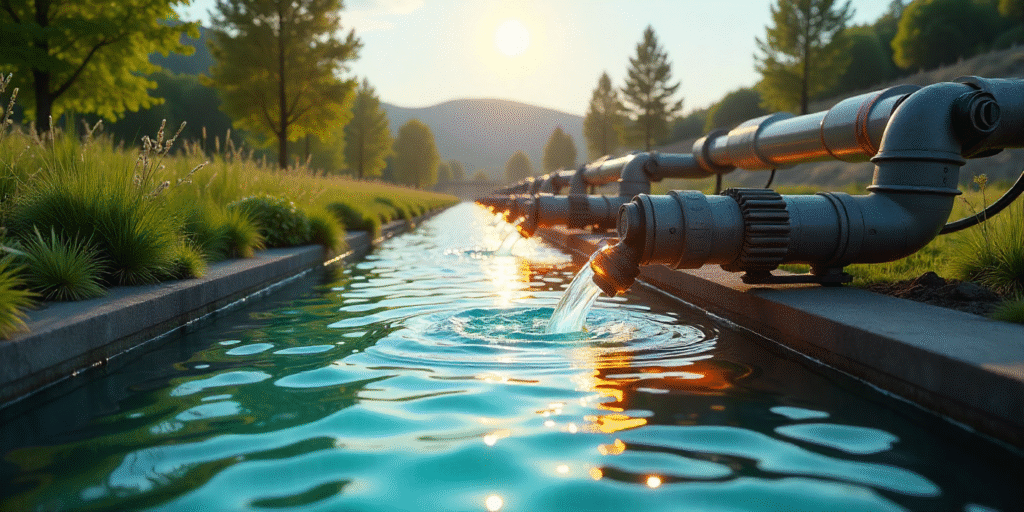Water is life, but in today’s fast-paced world, ensuring that the water we use and consume is safe has become increasingly complex. In 2025, wastewater treatment is no longer just about removing dirt or impurities—it’s about leveraging advanced technologies, predicting potential issues before they happen, and even transforming waste into valuable resources.
Recent incidents around the globe, from sewage spills to contamination warnings, remind us that the stakes are high. Communities from Murchison in Australia, where residents were advised to boil their tap water due to treatment issues, to Ludhiana in India, where local protests erupted over contaminated water supply, show that even modern treatment systems are vulnerable when technology, infrastructure, or management fails (Herald Sun) (Times of India). These events underscore the urgent need for innovation and robust systems.
Let’s explore some of the most exciting advancements in wastewater treatment in 2025, along with lessons we can learn from real-world incidents.
1. AI-Powered Optimization: Smarter Water Treatment
Imagine a treatment plant that can “think ahead.” That’s what AI-driven optimization offers. Modern wastewater plants are equipped with thousands of sensors that monitor water quality, chemical levels, and system performance. AI algorithms take this data and make predictive adjustments—almost like having a digital operator working 24/7.
For example, AI can optimize chemical dosing, reducing waste and operational costs, while simultaneously improving water quality. According to StartUs Insights, AI is helping plants not only maintain efficiency but also anticipate potential failures before they cause major problems. This predictive approach could have prevented incidents like the chlorine gas leak at the Grand Canyon’s North Rim water treatment facility, which required emergency evacuations and disrupted water supply (NPS News).
2. Autonomous In-Situ Treatment Systems: Decentralizing Water Management
Centralized treatment plants are expensive and complex to manage. That’s where autonomous in-situ systems shine. These systems can operate on-site, treating wastewater locally with minimal human intervention.
They’re particularly useful in remote areas or places with fragile infrastructure. Think of a small town that doesn’t have the budget or logistics to maintain a large plant. An autonomous system equipped with AI and sensors can monitor, process, and even report issues in real-time, ensuring safe water without extensive infrastructure. This technology has the potential to prevent local water crises before they escalate, making clean water more accessible and affordable (PMAP).
3. Next-Generation Membranes: Filtering Smarter, Not Harder
Membrane filtration has been a staple in water treatment for decades. In 2025, it’s getting a serious upgrade. Advanced membranes now feature enhanced permeability, fouling resistance, and selectivity, thanks to materials like metal–organic frameworks (MOFs).
What does this mean in practical terms? Facilities can remove more contaminants using less energy, reducing costs and environmental impact. Membranes are also now better equipped to handle industrial pollutants, heavy metals, and even microplastics, which traditional systems often fail to filter out (RSC Pubs).
For communities, this could translate to safer drinking water and fewer health risks. Imagine if the water in areas like Galveston, Texas, where a sewage overflow contaminated local canals, had passed through such advanced filtration—it could have minimized environmental and health impacts (Houston Chronicle).
4. Advanced Contaminant Destruction: Tackling the “Forever Chemicals”
Some pollutants, like pharmaceuticals or PFAS (per- and polyfluoroalkyl substances), are notoriously hard to remove. Enter Advanced Oxidation Processes (AOPs)—a technique that uses powerful oxidants to break down stubborn contaminants at a molecular level.
AOPs can significantly improve water safety, especially in urban areas with high chemical loads. Unlike traditional chlorination or sedimentation, these processes tackle contaminants that otherwise persist in water supplies, ensuring healthier water for communities (MDPI).
5. Resource Recovery: From Waste to Opportunity
Wastewater isn’t just waste—it’s a resource waiting to be tapped. 2025 has seen a rise in resource recovery systems, which extract biogas, nutrients, and even reusable water from wastewater streams.
This aligns with the circular economy concept, reducing waste and creating new value. For example, biogas recovered from sewage can power treatment plants themselves, cutting energy costs. Nutrients like nitrogen and phosphorus can be converted into fertilizers, supporting sustainable agriculture (WaterRF).
Incorporating these practices could prevent environmental disasters like nutrient pollution in rivers, which leads to algae blooms and disrupts ecosystems. It’s a win-win: cleaner water, lower costs, and valuable by-products.
6. Integrating Traditional Knowledge with Modern Tech
Interestingly, some regions are experimenting with traditional water purification practices combined with modern technologies. In Maharashtra, India, the rejuvenation of Sale Lake used ecological herbs alongside modern treatment techniques, restoring biodiversity and improving water quality (Times of India).
This approach shows that innovation doesn’t always mean high-tech—sometimes, blending old and new methods offers the most sustainable solutions.
Conclusion
2025 is shaping up to be a pivotal year for wastewater treatment. From AI-driven optimization to resource recovery, these technologies are not just making water treatment more efficient—they’re protecting public health, conserving resources, and reducing environmental impact.
However, technology alone isn’t enough. Recent incidents remind us that infrastructure, management, and public awareness are equally crucial. Communities, governments, and industries must work together to implement these innovations responsibly.
Ultimately, wastewater treatment in 2025 isn’t just about cleaner water—it’s about smarter, safer, and more sustainable water management for everyone.
Ensure safe and sustainable water, contact us today for expert solutions from Genviss.

